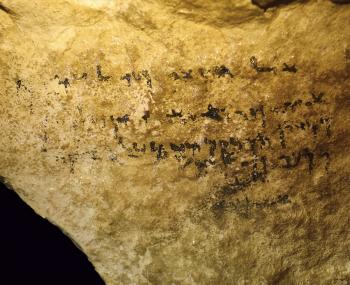American Journal of Archaeology | The Journal of the Archaeological Institute of America
You are here
Daya Cave: A Place of Worship of Mesopotamian and Persian Gods in the West Central Zagros Mountains, Iran
July 2023 (127.3)
Daya Cave: A Place of Worship of Mesopotamian and Persian Gods in the West Central Zagros Mountains, Iran
In the winter of 2021, a previously unknown and almost inaccessible cave called Aškawt-i Daya was discovered in the heart of Bakhakuh Mountain in the west central Zagros Mountains of Iran. An exceptional feature of the cave is its collection of paintings on the walls and ceiling with animal and human motifs, rendered in black pigment, both singly and in groups involved in scenes of hunting and slaughter. As with other rock paintings in Iran, establishing a date for these paintings is difficult, but there are hints both from the presence of certain motifs and from accompanying inscriptions that the paintings were probably created from the Achaemenid (550–330 BCE) to the Parthian period (247 BCE–224 CE). A depiction of a bull-man, as well as the appearance in the inscriptions of the names of divinities such as Nergal, Marduk, Sin, and Šamaš, suggest that the original gods to be worshiped in the cave were Mesopotamian. The use of the cave as a place of worship continued into the Seleucid (312–63 BCE) and then the Parthian and early Sassanian periods, by which time the cave had been transformed into the setting for a cult of Mithra.
Daya Cave: A Place of Worship of Mesopotamian and Persian Gods in the West Central Zagros Mountains, Iran
By Sajjad Alibaigi, Iraj Rezaei, Farhad Moradi, Seiro Haruta, John MacGinnis, Naser Aminikhah, Shokouh Khosravi
American Journal of Archaeology Vol. 127, No. 3 (July 2023), pp. 419–435
DOI: 10.1086/724659
© 2023 Archaeological Institute of America


